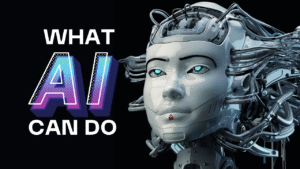Emerging Trends In Science
Emerging Trends in Science
Science is changing our world faster than ever before, and we are now witnessing a range of emerging trends that are shaping the future. One of the most significant trends is the advancement of artificial intelligence (AI) and machine learning. These technologies are now being used in various fields, including healthcare, agriculture, transportation, and even education. AI helps in early disease detection, smarter crop management, autonomous vehicles, and personalized learning experiences. Alongside AI, robotics is making rapid progress. Robots are now assisting in surgeries, manufacturing, and even space missions. These machines are not only increasing efficiency but also reducing human error. Another crucial trend is the growing interest in quantum computing, which has the potential to revolutionize problem-solving in fields like cryptography and complex simulations.
Quantum computers can process massive amounts of data at unimaginable speeds, which would make existing supercomputers look slow in comparison. Scientists around the world are working on achieving quantum supremacy, which refers to a stage where quantum computers outperform the best classical computers in specific tasks. Moreover, space exploration has regained global attention. Private companies such as Space X and Blue Origin, along with national agencies like NASA and ISRO, are working together to make space travel more affordable and accessible. Plans for Moon bases and Mars missions have already started, and the next decade may witness humans living on other celestial bodies. All of these advancements are interlinked, forming a scientific ecosystem that is changing the way we live, work, and explore.

In addition to the previously mentioned areas, biotechnology is another emerging field that is transforming science and society. Gene editing technologies like CRISPR are making it possible to correct genetic disorders and potentially eliminate hereditary diseases. Scientists are now able to modify the DNA of living organisms with precision, opening new doors in medicine and agriculture. Personalized medicine, which tailors treatment to the individual based on genetic information, is becoming more common and accessible. This not only improves treatment effectiveness but also reduces side effects. Additionally, the use of 3D printing in the medical field is revolutionizing prosthetics, organ transplants, and even drug manufacturing. Imagine a world where customized organs can be printed and used for surgery—this is no longer science fiction but a scientific reality in progress. Another major trend is in environmental science and sustainability. As climate change becomes a pressing global issue, scientists are developing new methods to capture carbon, create clean energy, and protect biodiversity. Solar and wind energy are now more efficient than ever, and battery storage technology is improving rapidly.
Innovations like vertical farming, lab-grown meat, and biodegradable materials are helping us move toward a more sustainable future. These scientific breakthroughs are essential for reducing pollution, conserving resources, and supporting a growing global population. Governments, businesses, and individuals are now realizing the importance of investing in science to solve real-world problems and secure a better future for all.
Moreover, neuroscience and brain-computer interfaces are unlocking new understanding of the human brain. Technologies like Brain-Computer Interfaces (BCIs) are being developed to help people with disabilities control devices using only their thoughts. This could mean that a person with paralysis could control a wheelchair, type messages, or even communicate using a brain signal. Scientists are also making progress in understanding mental health conditions and developing treatments that are more effective and targeted. With the help of neuroimaging tools, researchers are discovering how different parts of the brain interact, which can lead to better diagnosis and therapy for diseases like Alzheimer’s, depression, and schizophrenia.
Wearable brain sensors and AI algorithms are being used to monitor stress levels, mood changes, and sleep patterns in real time. This allows for early intervention and better mental well-being. On another front, nanotechnology is making waves in industries from electronics to medicine. By manipulating matter at the molecular or atomic level, scientists can create materials with special properties such as being stronger, lighter, or more conductive.
Nano medicine, for example, enables targeted drug delivery, where medicine is sent directly to the affected cells without damaging healthy tissues. This reduces side effects and increases treatment success rates. Nanotechnology is also helping in water purification, renewable energy production, and the creation of smart fabrics and coatings. These innovations are improving quality of life and driving the global economy forward through cutting-edge applications.</p>
Finally, one cannot overlook the power of interdisciplinary research and data science in shaping the new scientific era. Today, collaboration between scientists from different fields is leading to unexpected discoveries and applications. For instance, the combination of biology, chemistry, and computer science is driving forward synthetic biology, where researchers can design and build new life forms or reprogram existing ones for specific purposes like producing biofuels or cleaning up oil spills. Similarly, data science and big data analytics are being used to predict disease outbreaks, model climate changes, and optimize supply chains. The ability to collect, store, and analyse massive datasets is giving researchers insights that were impossible just a decade ago. Additionally, the rise of citizen science, where ordinary people participate in scientific research using their smartphones and internet access, is democratizing science and creating a global network of knowledge sharing.
Scientific communication is also improving with the help of digital tools and platforms, enabling faster publication, peer review, and public engagement. Educational institutions are now incorporating emerging science trends into their curriculum to prepare the next generation of scientists, innovators, and critical thinkers. The future of science looks bright as it continues to evolve and intersect with our daily lives. From tackling climate change to curing complex diseases and exploring outer space, science is at the heart of human progress. As we move forward, it is essential to promote science literacy, invest in research, and support global cooperation so that the benefits of scientific adva
ncements reach every corner of the world.









































1 comment